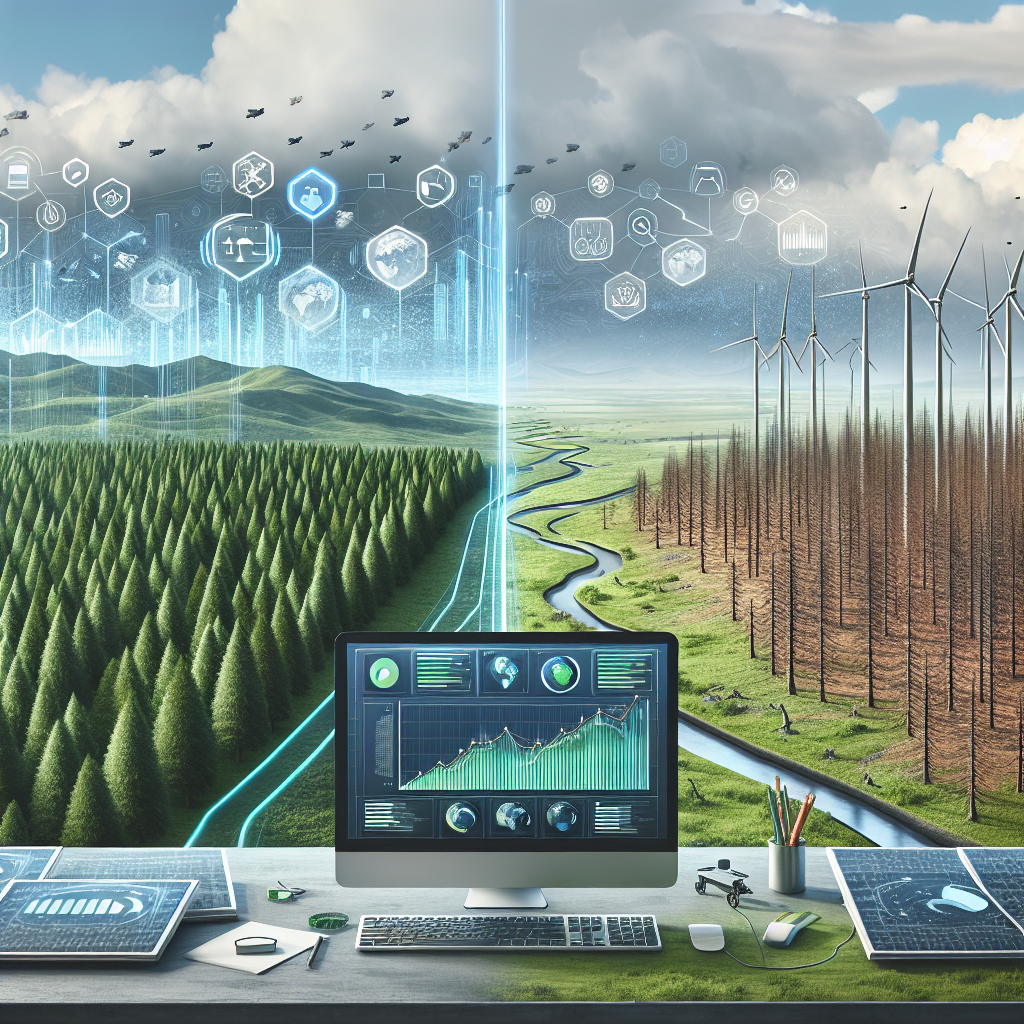Climate change is one of the most pressing challenges facing our planet today. The rise in global temperatures, extreme weather events, melting ice caps, and rising sea levels are just some of the consequences of human-induced climate change. In order to combat this crisis, innovative solutions are needed, and artificial intelligence (AI) is playing a crucial role in addressing environmental challenges.
AI refers to the simulation of human intelligence processes by machines, particularly computer systems. This technology has the ability to analyze vast amounts of data, identify patterns, and make predictions, making it a powerful tool for addressing complex problems like climate change. AI can be applied in a variety of ways to help mitigate and adapt to the impacts of climate change.
One of the key ways in which AI is being used to address climate change is through the analysis of big data. Climate scientists are collecting massive amounts of data on weather patterns, greenhouse gas emissions, sea level rise, and other factors related to climate change. AI algorithms can process this data much more quickly and efficiently than humans, allowing researchers to uncover insights and trends that would have been difficult to discover using traditional methods.
For example, AI can be used to analyze satellite imagery to track deforestation, monitor the health of coral reefs, and detect illegal fishing activities. This data can then be used to inform conservation efforts and policy decisions aimed at protecting these ecosystems. AI can also be used to predict extreme weather events, such as hurricanes and droughts, allowing communities to better prepare and respond to these disasters.
In addition to analyzing data, AI can also help optimize energy consumption and reduce greenhouse gas emissions. Smart grids, which use AI algorithms to manage energy distribution and consumption, can help reduce electricity waste and increase the efficiency of renewable energy sources. AI-powered building management systems can adjust heating, cooling, and lighting based on occupancy levels, reducing energy use in commercial buildings. Autonomous vehicles, which are powered by AI, can help reduce emissions from transportation by optimizing routes and driving more efficiently.
Furthermore, AI can be used to develop new technologies that can help mitigate climate change. For example, researchers are using AI to design more efficient solar panels, develop carbon capture technologies, and optimize the production of biofuels. AI can also be used to improve the efficiency of agriculture by optimizing crop yields, reducing water usage, and minimizing the use of pesticides and fertilizers.
Overall, AI has the potential to revolutionize the way we address climate change by providing new insights, optimizing resource management, and developing innovative solutions. However, there are also challenges and limitations to consider when using AI in the context of climate change.
One of the main challenges is the potential for bias in AI algorithms. If the data used to train these algorithms is biased or incomplete, the AI system may make inaccurate predictions or recommendations. For example, if a climate model is trained on historical data that does not account for certain factors, it may not accurately predict future climate trends. It is important for researchers and developers to carefully consider the data used to train AI algorithms and ensure that it is representative and unbiased.
Another challenge is the energy consumption of AI systems. Training and running AI algorithms requires a significant amount of computational power, which can contribute to greenhouse gas emissions if the energy used comes from fossil fuels. Researchers are working on developing more energy-efficient AI algorithms and using renewable energy sources to power AI systems in order to minimize their environmental impact.
There are also ethical considerations to take into account when using AI to address climate change. For example, there is a risk that AI technologies could be used to infringe on privacy rights or manipulate public opinion on climate issues. It is important for policymakers to establish guidelines and regulations to ensure that AI is used responsibly and ethically in the fight against climate change.
Despite these challenges, the potential benefits of using AI to address climate change are significant. By harnessing the power of AI to analyze data, optimize resource management, and develop innovative technologies, we can make progress towards a more sustainable and resilient future. As the impacts of climate change become more severe, it is crucial that we continue to explore and leverage the potential of AI to help mitigate and adapt to these challenges.
FAQs:
1. How is AI being used to predict climate change?
AI is being used to analyze historical climate data, satellite imagery, and other sources of information to develop models that can predict future climate trends. These models can help researchers understand how climate change is likely to impact different regions and ecosystems, allowing for better planning and adaptation strategies.
2. Can AI help reduce greenhouse gas emissions?
Yes, AI can help reduce greenhouse gas emissions by optimizing energy consumption, developing more efficient technologies, and improving resource management. By using AI to identify opportunities for emissions reductions and implement sustainable practices, we can work towards mitigating the impacts of climate change.
3. What are some examples of AI technologies that are helping address climate change?
Some examples of AI technologies that are being used to address climate change include smart grids, autonomous vehicles, and AI-powered building management systems. These technologies are helping to reduce energy waste, optimize resource use, and develop innovative solutions for mitigating climate change.
4. What are the limitations of using AI to address climate change?
Some limitations of using AI to address climate change include potential bias in algorithms, energy consumption of AI systems, and ethical concerns. It is important for researchers and policymakers to address these challenges and ensure that AI is used responsibly and ethically in the fight against climate change.

